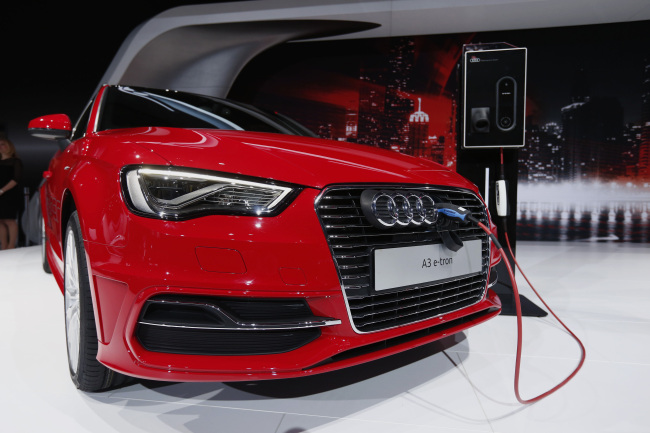
Audi, the world’s second-largest maker of luxury vehicles, is betting that green-car fans are more interested in low emissions than distinctive designs.
While electric autos like the BMW i3 and Tesla Model S garner interest because their styling stands out, Audi’s first plug-in hybrid is a modified version of its A3 hatchback that looks identical to the conventional model. The A3 Sportback E-Tron can drive emission free for 50 kilometers and will cost as much as 15,100 euros ($20,600) more than its gasoline-powered twin when it goes on sale this month.
Adding electric technology to the existing model lineup “gives us maximum flexibility,” Rupert Stadler, head of the Volkswagen AG unit, said Thursday in a meeting with journalists in Vienna. “We can react better to changes in demand,” while producing a separate hybrid or fully electric model “also means fixed costs.”
Audi’s under-the-hood approach to clean-car technology diverges from the path taken by rival Bayerische Motoren Werk. The biggest luxury-car manufacturer created the “i” subbrand to showcase its electric offerings. The battery-powered i3 city car and the plug-in hybrid i8 sports car have plastic exterior body panels and unique styling to make them stand out from other cars on the road.
“BMW created a product that is totally different,” while Audi as well as Daimler AG’s Mercedes-Benz “try to integrate e-mobility into their existing vehicles,” said Christian Breitsprecher, a Frankfurt-based analyst with Macquarie Europe. The advantage for Audi and Mercedes is “if there’s lots of demand, they can produce a lot. If not, they can allocate the capacity to their normal cars.” (Bloomberg)





![[Exclusive] Hyundai Mobis eyes closer ties with BYD](http://res.heraldm.com/phpwas/restmb_idxmake.php?idx=644&simg=/content/image/2024/11/25/20241125050044_0.jpg)
![[Herald Review] 'Gangnam B-Side' combines social realism with masterful suspense, performance](http://res.heraldm.com/phpwas/restmb_idxmake.php?idx=644&simg=/content/image/2024/11/25/20241125050072_0.jpg)

